Table of contents

Aquatic plants are increasingly used in home decoration to add beauty to the environment. Known as hydrophytes, they live in very humid or watery places, including submerged and floating species. The size and presence of flowers can be quite different, so it is good to know details about them to choose which one to grow.
Water Plants for Pots
Among the various aquatic plants there are those that can be grown in a pot. They are great for those who do not have much space at home, but wish to have an aquatic plant:
1. chinese umbrella

The Chinese umbrella ( Cyperus alternifolius Originally from Madagascar, this aquatic plant grows quickly and is widely used in landscaping projects.
- Key features: It has upright stems and green leaves that together form a rosette. It can also have very small yellowish green flowers in the center of its rosette.
- Size: from 0.5 to 1.20 meters high.
- Sun exposure: However, if full sun is too intense, the leaves can burn and damage the health and appearance of the plant.
- Watering: has to be frequent, since the soil always needs to be moist.
- Soil Type: should be moist and rich in organic matter.
- Fertilization: can be done with organic (animal) fertilizer or with granulated NPK 10-10-10 dissolved in water.
Despite being from Madagascar, today the Chinese parasol has conquered several territories in the world. It likes equatorial, tropical, subtropical and oceanic climates and, for this reason, grows well in Brazil. Check out examples of how to grow Chinese parasols in pots:
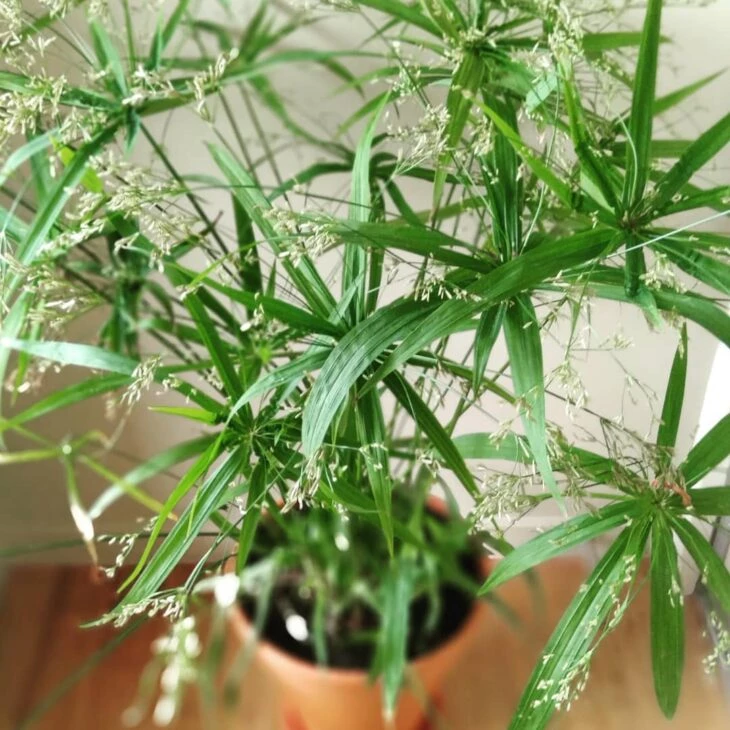


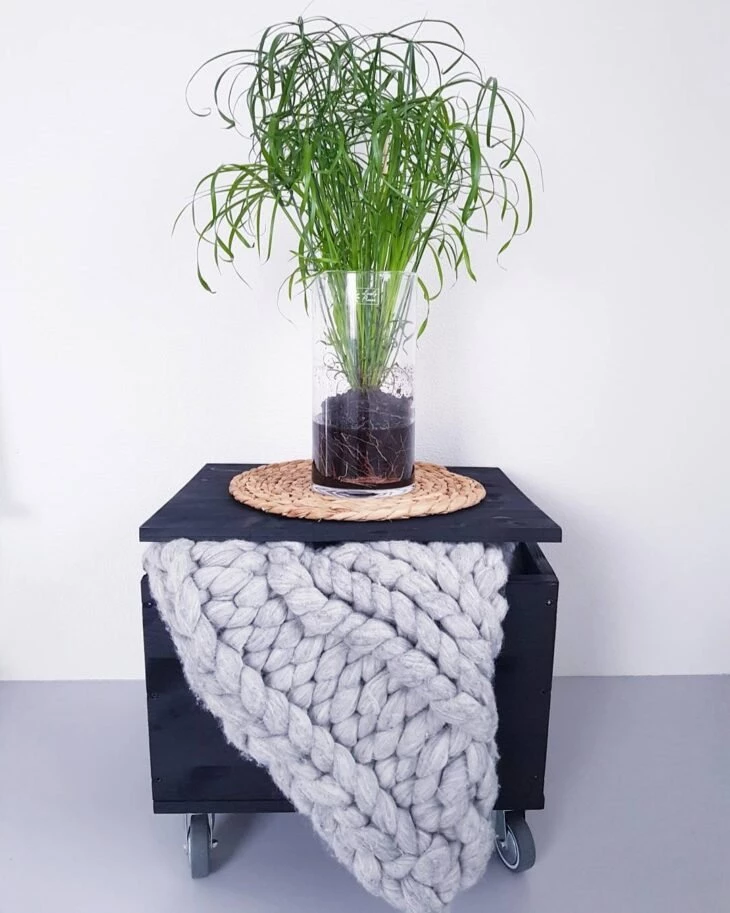
See how imposing the Chinese parasol is? It brings a lot of elegance to the environment. Besides, the life cycle of this aquatic plant is perennial, that is, it is long and you can enjoy it for a long time!
2. nymph
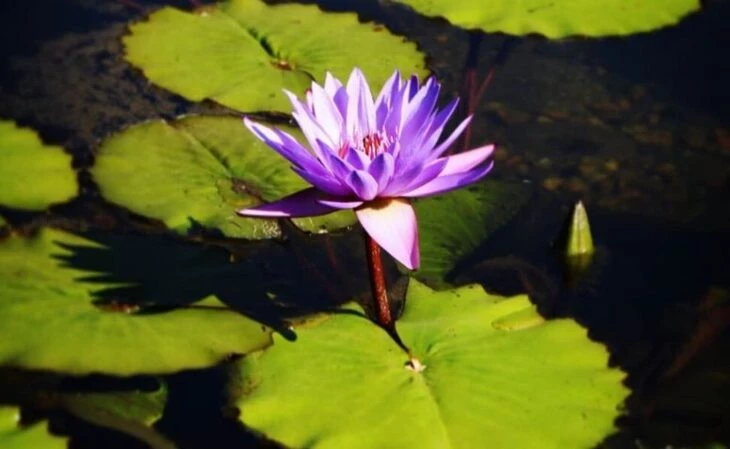
The nymph ( Nymphaea ) gives beautiful flowers and offers several options for those who want to grow it at home, since there are several species of the plant. The most indicated is to grow it in pots, and then put it in a basin or artificial ponds, because in pots the cultivation is easier and they limit the growth of the plant.
- Key features: The size and color of the flowers vary according to the species. The most famous are pink, white, and blue. The nymphaea has floating flowers and leaves, and these are always green, round, and have a cut at the base.
- Size: from 20 to 50 centimeters in diameter.
- Sun exposure: When grown in half-shade, you must ensure that it will be exposed to sunlight for at least 6 hours a day.
- Watering: if the roots are not submerged in water, such as in a basin, you need to water them frequently. if they are submerged, it is important to check the water quality from time to time.
- Soil Type: has to be moist, clayey, and rich in fertilizer.
- Fertilization: If the pot is in a larger basin, it is necessary to take it out of the basin to do the fertilizing. The most recommended is to use slow release aquatic fertilizers.
The flowers begin to appear in the spring and remain until summer, so it is recommended to start the cultivation in early spring. Besides having nymphs at home, they can still be used in events. See how beautiful they are:
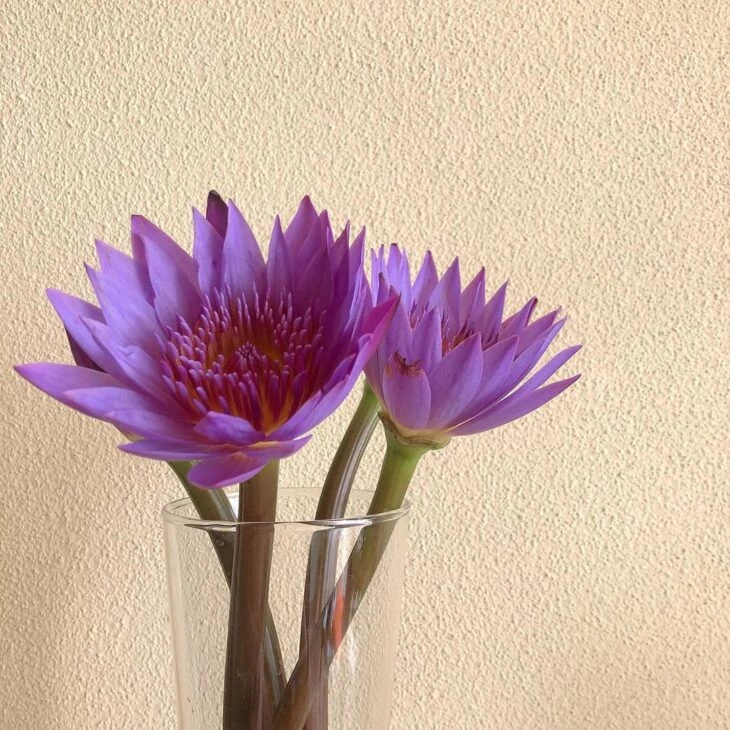

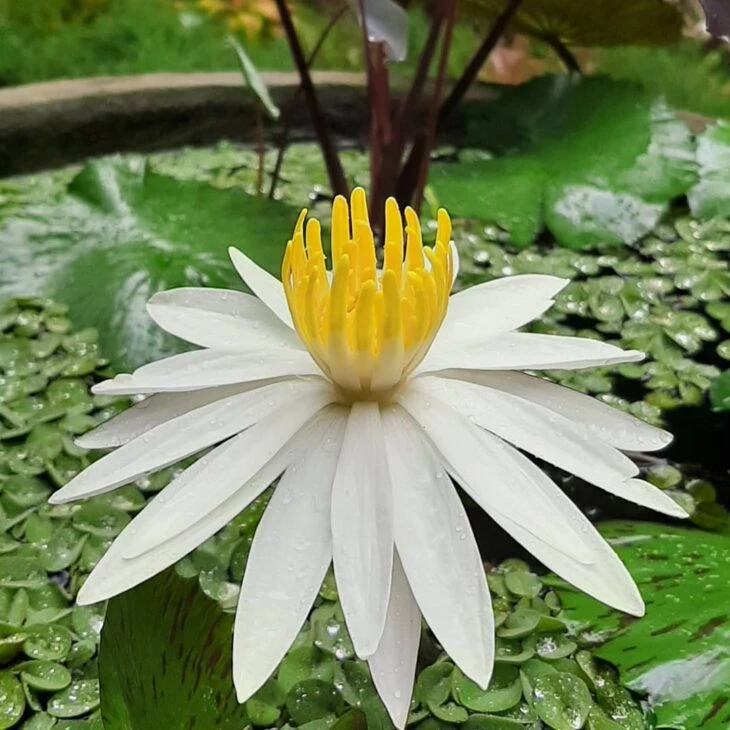

No one can deny the beauty of nymphs! If you have a bright space to put a large pot or basin in your home, this plant can be a great addition to beautify your home.
3. singonium
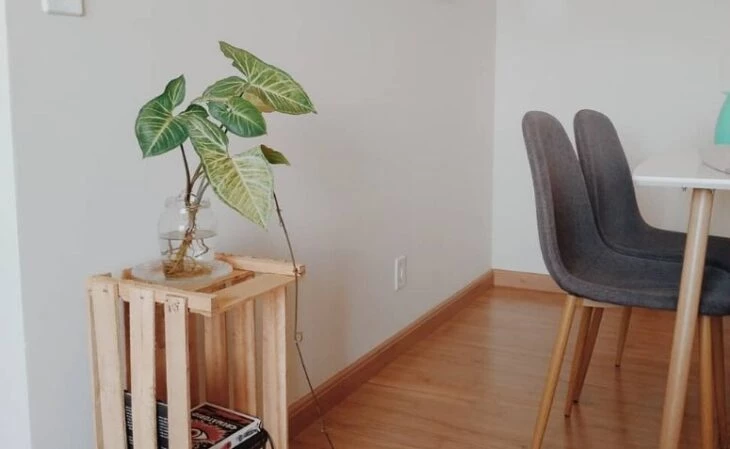
The singonium ( Syngonium angustatum ) is technically a land plant, but it behaves like an aquatic plant when grown in water. It is often found in decorations thanks to its leaves that stand out in environments.
- Key features: The shape and appearance of the leaves (which change as they grow) are what most call attention to this plant. They can be just green or variegated on the nerves. The singonium still has white flowers, but the charm is really the leaves of this plant.
- Size: averages 80 centimeters in height.
- Sun exposure: half-shade, because it needs light, but not directly.
- Watering: When grown in the ground, watering the plant should be regular so that the soil stays moist.
- Soil Type: humid, fertile, and rich in organic compost (preferably from vegetables indoors).
- Fertilization: Fertilization should be done mainly in the spring, when the plant begins to grow.
As the singonium is grown in semi-shade, it is great for indoors. If you live in an apartment, for example, it is a great option. Look at its leaves and how it can transform a space:
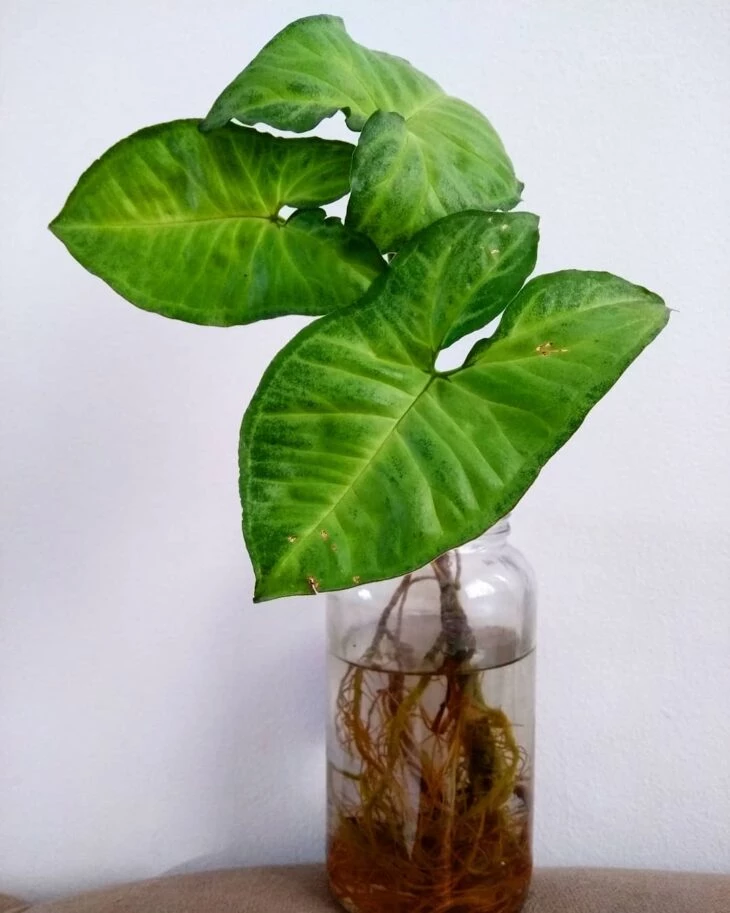
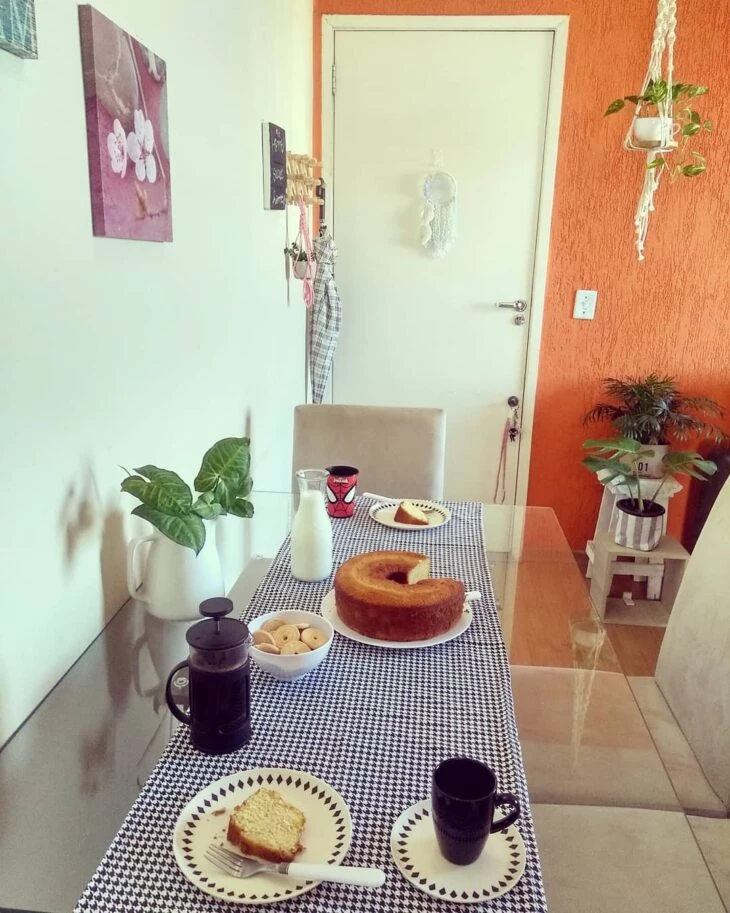

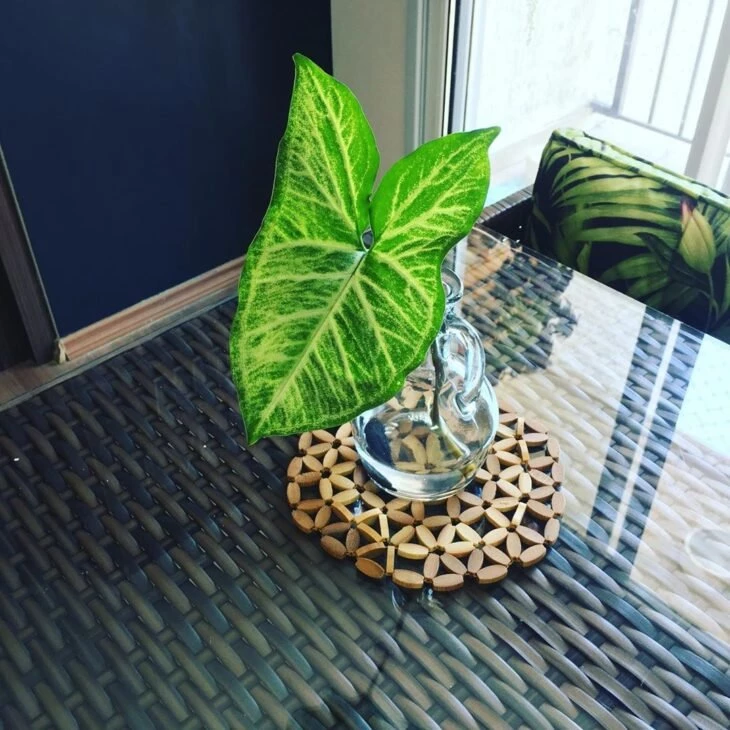
The singonium gives a special charm to indoor environments. However, if you wish to grow it in your home, be careful when handling it, because it is toxic. It can cause irritation to the skin of people and animals, so the ideal is to handle it with gloves.
4. horsetail
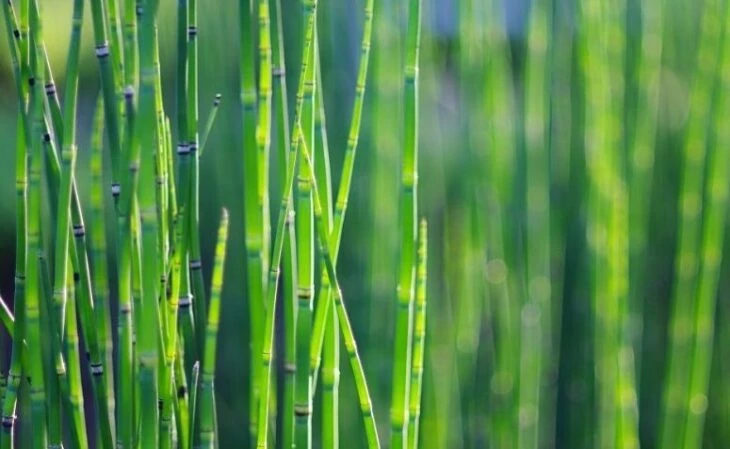
Horsetail ( Equisetum hyemale ) is a plant found on the shores of lakes and streams in nature. It is native to countries in the Americas, including Brazil, so it grows well here. It is another one of the list of terrestrial and aquatic plants. In landscaping, it is often used in mirrors of water, gardens, and around artificial lakes.
- Key features: The stems of the horsetail are green, hollow, and erect. Easy to cultivate, the plant does not have flowers or seeds.
- Size: 0.30 to 2.0 meters high, depending on the variation of the horsetail.
- Sun exposure: Full sun, and the plant needs at least 4 hours of daily sun.
- Watering: should be frequent so that the soil always remains moist.
- Soil Type: It can be made with soil and organic compost or worm humus.
- Fertilization: It can be done with organic fertilizer or NPK 10-10-10.
You can grow this plant in pots or directly in the ground. However, the first option is better, because when planted in the ground, horsetail can invade the space of other plants:

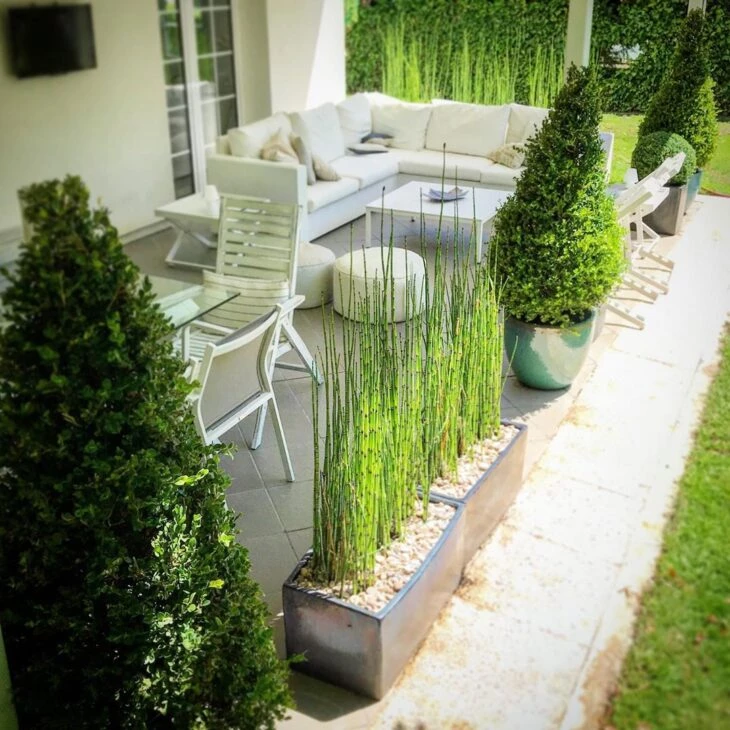
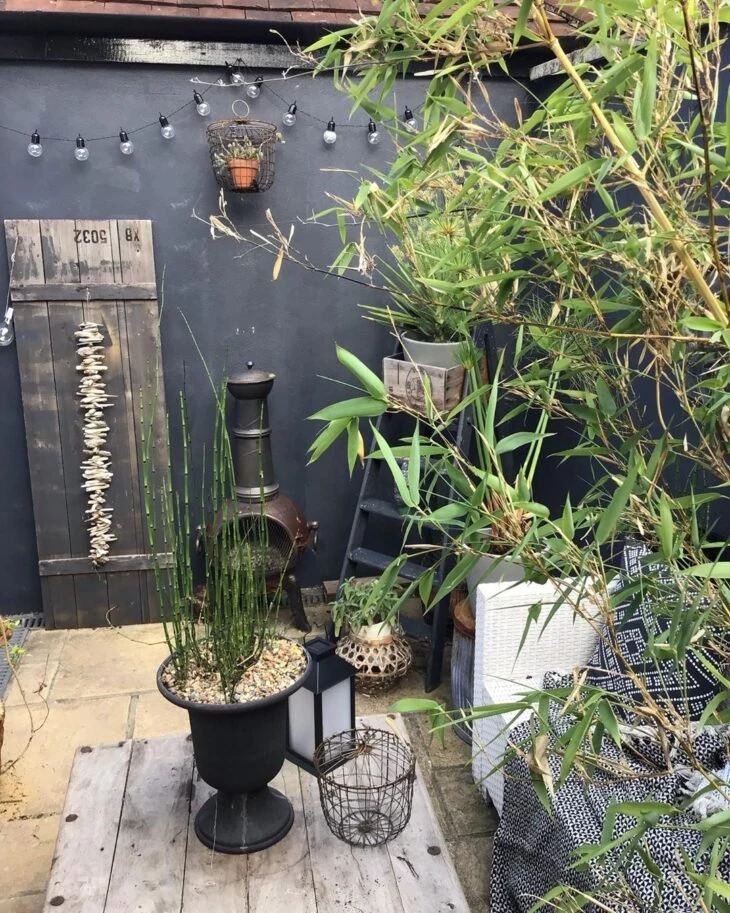
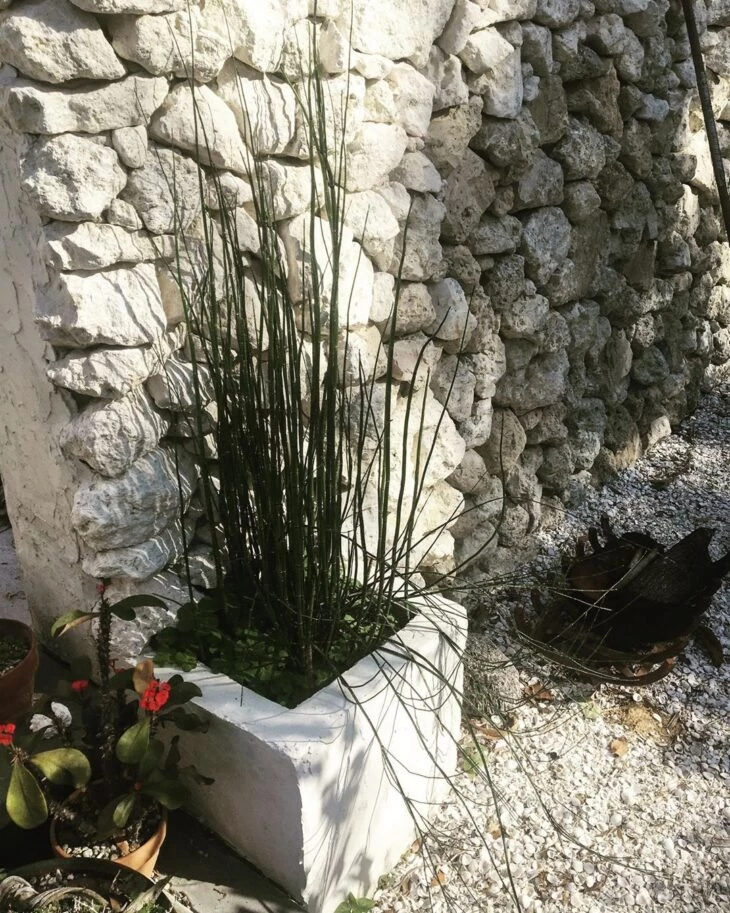
This plant is still considered medicinal because of certain characteristics, such as being diuretic and healing. However, before using it for medicinal purposes, it is important to do some research on the subject. Make sure that it is suitable for your purpose and that you are able to consume it.
5. black yam
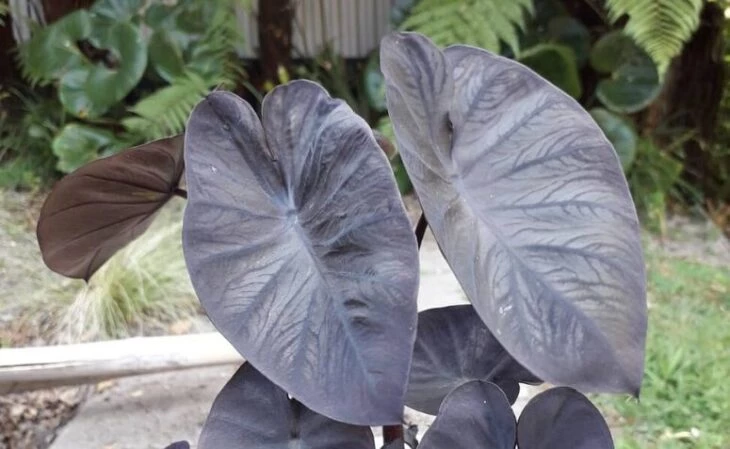
Our last aquatic plant to grow in pots is the black yam ( Colocasia esculenta aquatilis This variation of it is grown as an aquatic plant, so it is often found in flowerbeds and pond shores, as well as in pots.
- Key features: The most striking thing about the black yam is its heart-shaped, purplish leaves. They are born green, but change color as the plant develops. The leaves start to become more beautiful in winter and reach their peak in spring and summer.
- Size: 0.70 to 2.0 meters high.
- Sun exposure: However, it also thrives well in semi-shade.
- Watering: has to be frequent so that the soil does not dry out.
- Soil Type: humid, rich in organic matter, fertile and light.
- Fertilization: can be done with NPK 10-10-10 diluted in water.
The black yam originated in Asia, but it adapts well to Brazil since it likes tropical, equatorial and subtropical climates:


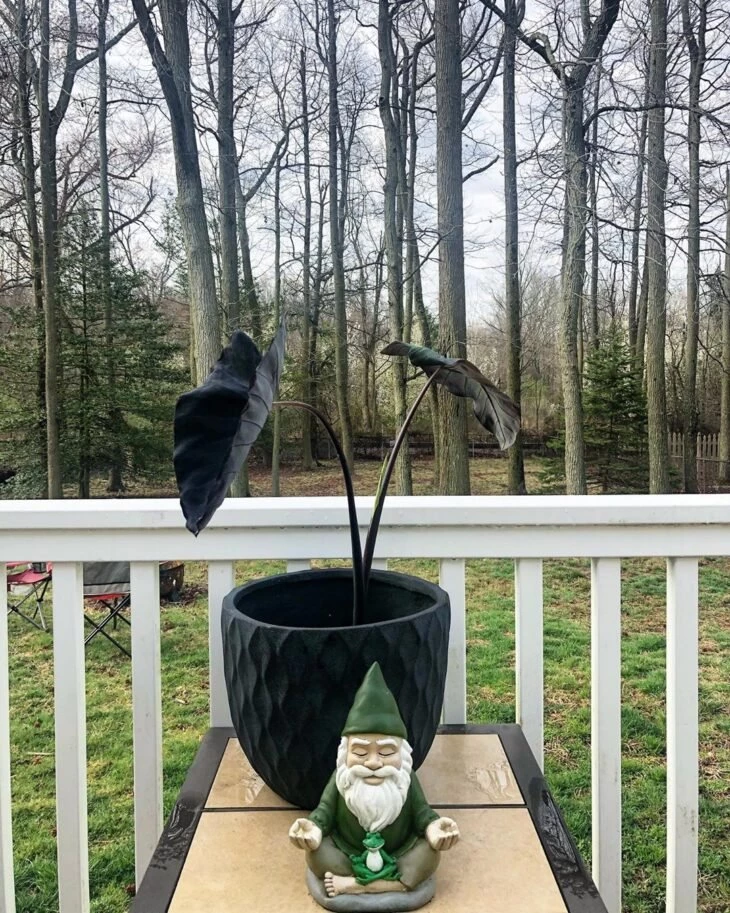
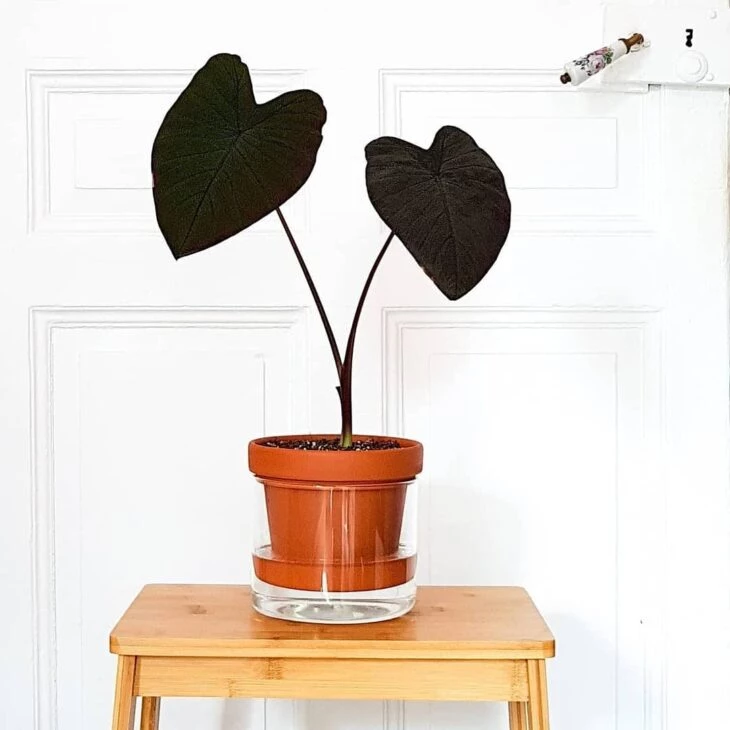
Besides being a plant with beautiful and delicate leaves, the care of the black yam is simple.
Floating aquatic plants
Floating aquatic plants are those that float on the surface of the water. They are very popular to compose ponds and mirrors of water, but can also be grown in large pots depending on the species. Their roots can be either fixed or free. See now 5 types to have at home:
6. water lettuce
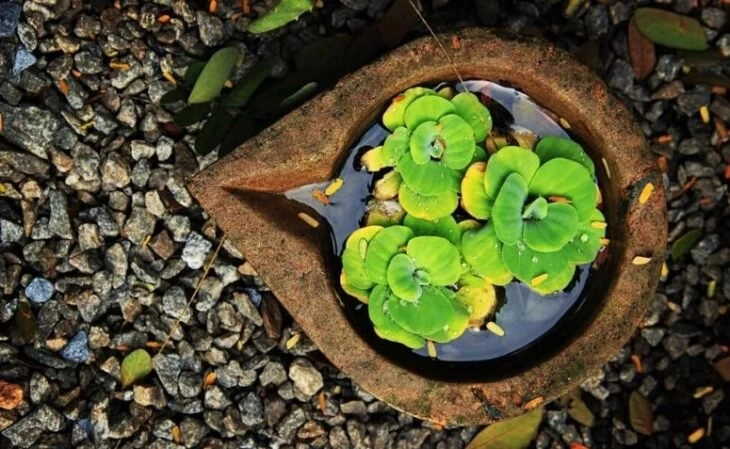
The water lettuce ( Pistia stratiotes The plant is native to Tropical America and also originated here in Brazil.
- Key features: The leaves of this plant are green, lettuce-like in shape, and form rosettes in the center. The texture of the water lettuce is velvety, and its roots are pendulous. It bears flowers, but they have no relevance to decoration.
- Size: up to 20 centimeters high.
- Sun exposure: full sun, because it needs light to develop.
- Watering: does not need to be done, but care must be taken with the water used for cultivation. It has to be free of chlorine and other chemicals.
- Soil Type: does not need, because it is a floating plant.
- Fertilization: water can be fertilized, but water lettuce multiplies quickly, so if you don't have much space, it is not recommended to use fertilizer frequently, as the plant can become a weed.
Water lettuce can be grown in small pots, large pots, fountains, ponds, and mirrors of water:
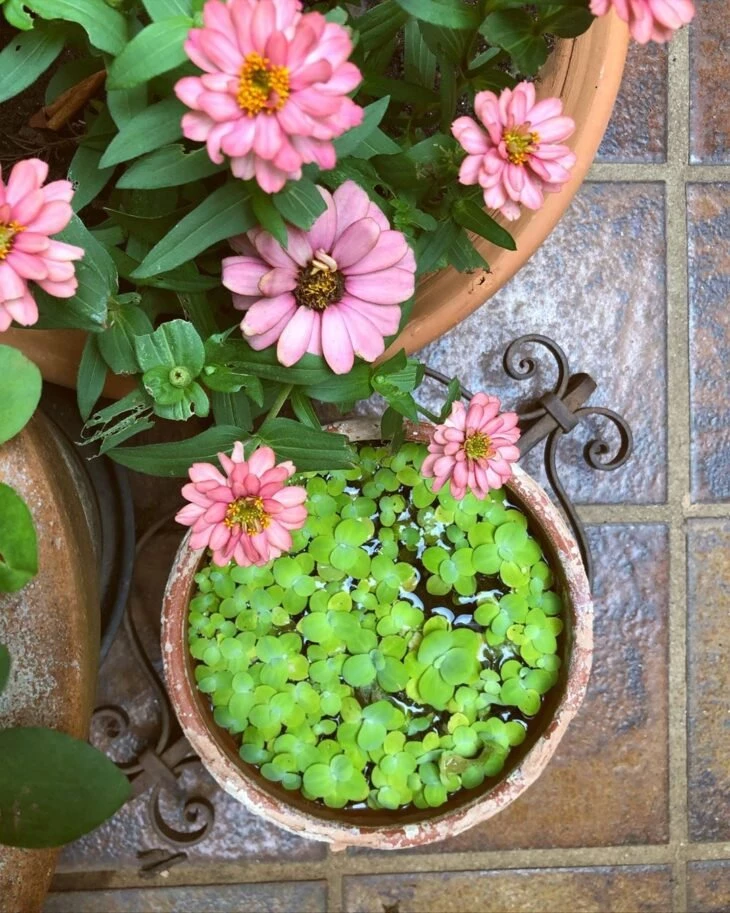

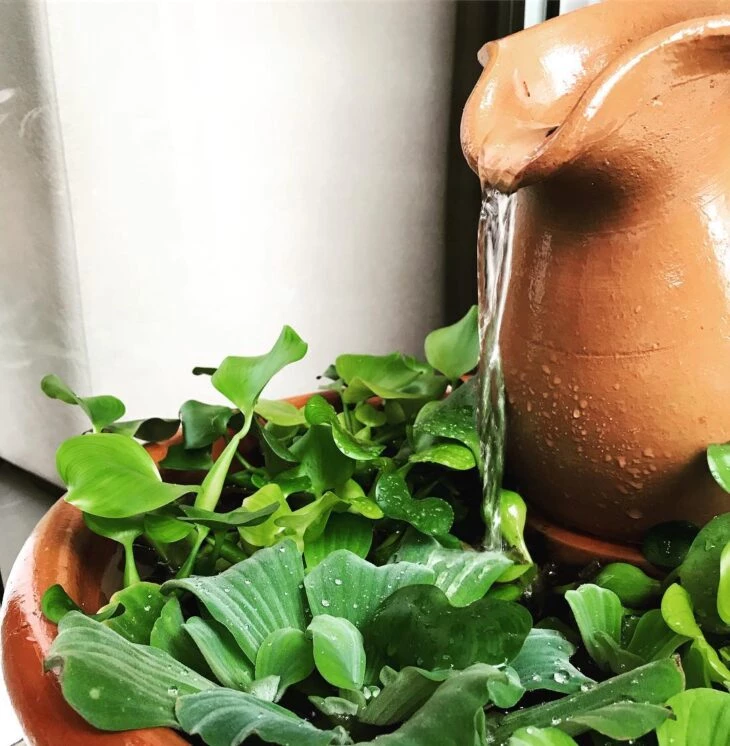
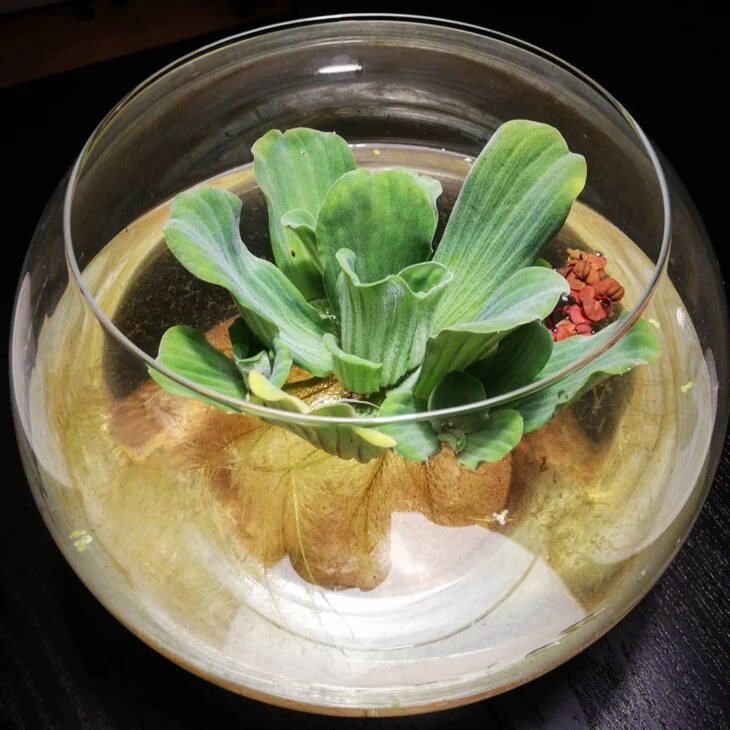
This plant is easy to grow, after all, you just need to leave it in the sun and take care of the water quality. The ease of care and the appearance of this plant make it a darling of landscaping. How about beautifying your home with it?
7. waterappe
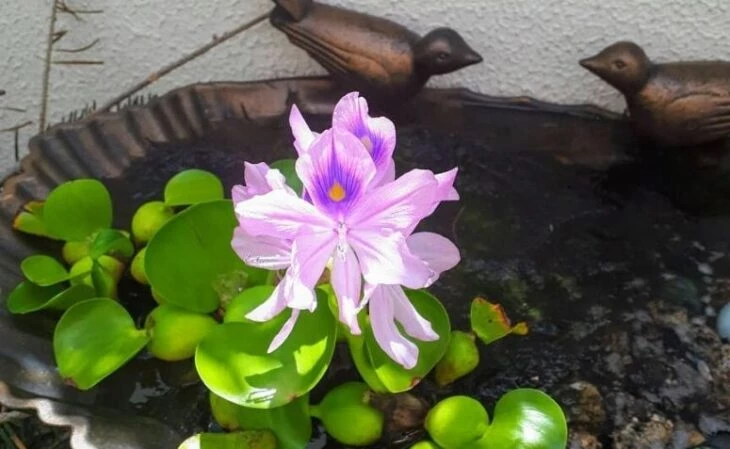
Also known as water hyacinth and camalote, the water hyacinth ( Eichornia crassipes ) is a floating plant famous for its flowers that appear almost all year round. It is native to tropical South America and therefore likes warm weather.
- Key features: The shape of the leaves may vary according to the species, but all varieties are easy to grow. The roots of the plant stay submerged in water, while the flowers and leaves do not.
- Size: 15 to 80 centimeters high.
- Sun exposure: full sun.
- Watering: There is no need to water the plant, but the water must be fertile and have an adequate pH (around 6 and 7).
- Soil Type: is not necessary, because the plant is buoyant.
- Fertilization: It is not necessary to fertilize the water lily. If the plant is in an artificial lake with fish, the necessary fertilizing will be done naturally. Moreover, it is forbidden to use fertilizers in these places, because they can poison the animals that live with the water lily.
To grow the water plant, you can first put it in a pot if you don't have space available. Then you can transport it to an enclosed pond. Remember not to put it in places where it can go into rivers, for example, or streams because it is capable of invading them. See home-growing ideas:
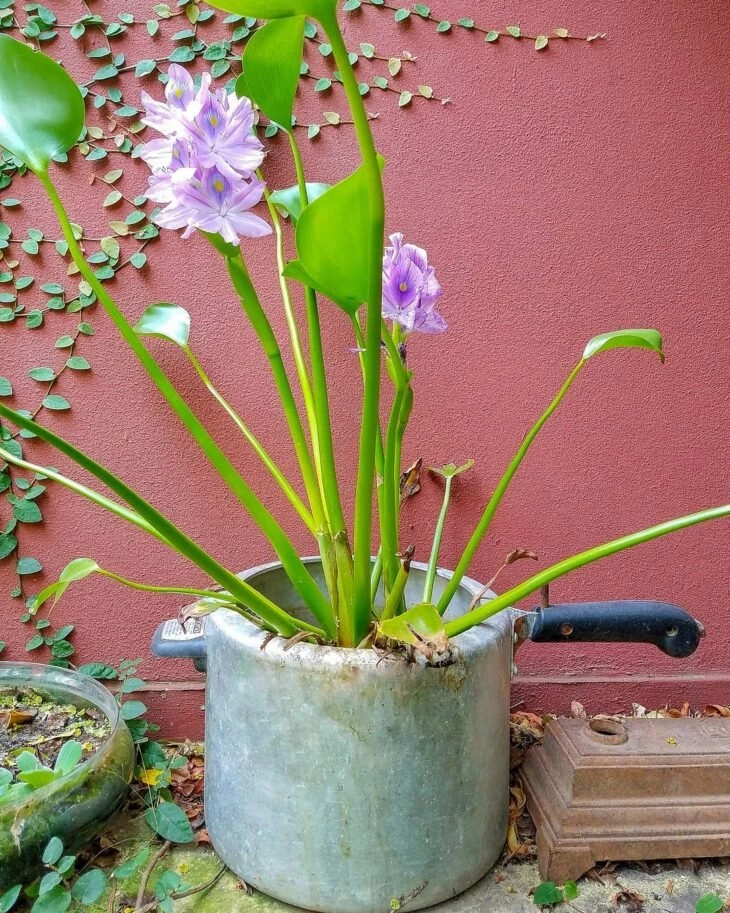
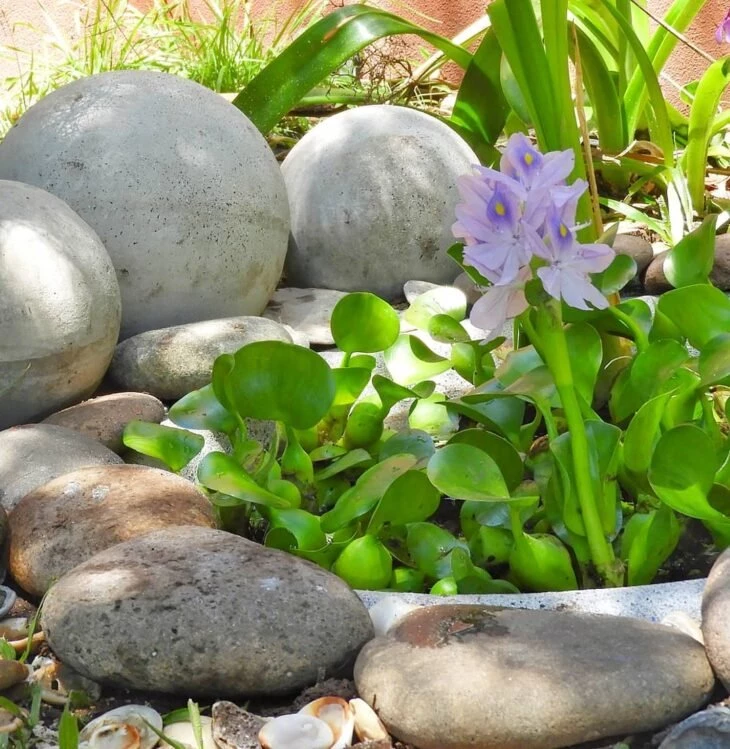

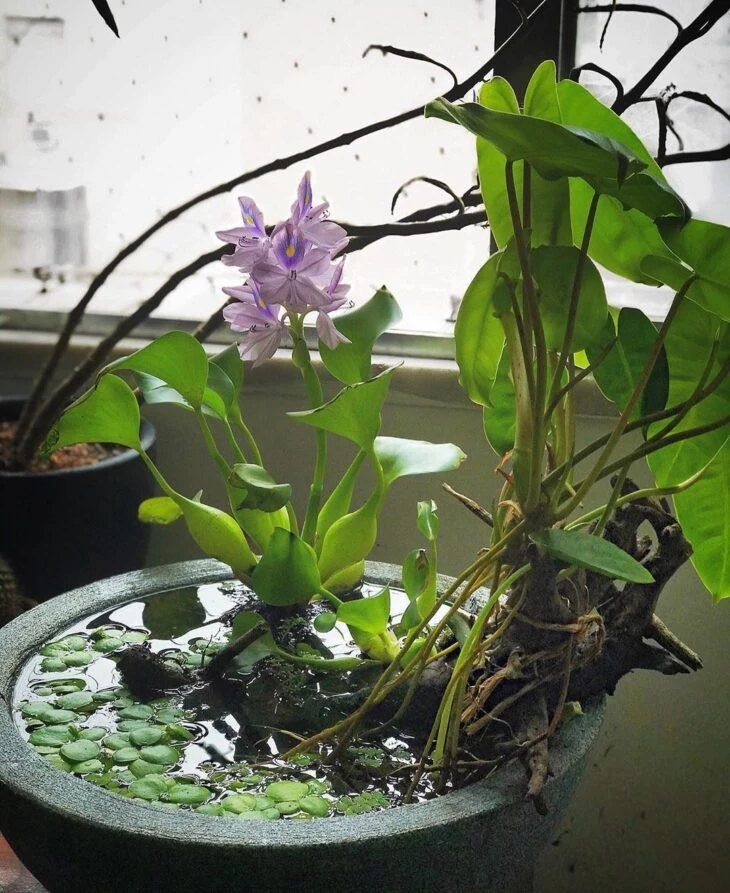
If you have a small pond at home, growing water lilies can be very beneficial, because the plant can remove pollutants from the water.
8. regal Victory

Many confuse the water lily ( Amazon Victoria ) with the nymphaea, but they are different plants. Both are part of the family Nymphaeceae The water lily is native to the Amazon basin and a true symbol of the region. It can be found in Brazil, Bolivia, and the Guianas. Growing the beautiful water lily is more complicated than growing other aquatic plants.
- Key features: is the largest aquatic plant in the world, so it must be cultivated in ponds or tanks that are at least 90 centimeters deep. Its leaves are green and round, while the flowers are white the first day, but later turn pink.
- Size: A leaf can be up to 2.5 meters in diameter.
- Sun exposure: full sun.
- Watering: The plant can be grown in mineral, natural, and even rain water.
- Soil Type: the bottom of the pond or lake should have clay soil that is indifferent to organic compounds.
- Fertilization: light fertilization is needed from time to time for the water lily to develop well.
The Victoria Regia flowers appear in the summer. Unfortunately, they only last for 48 hours, but this plant is charming all the same:

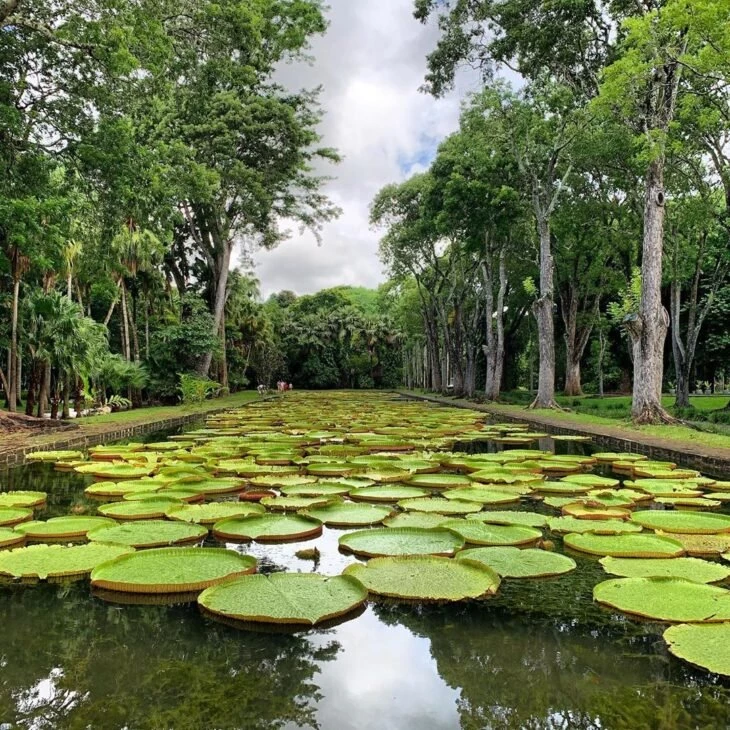
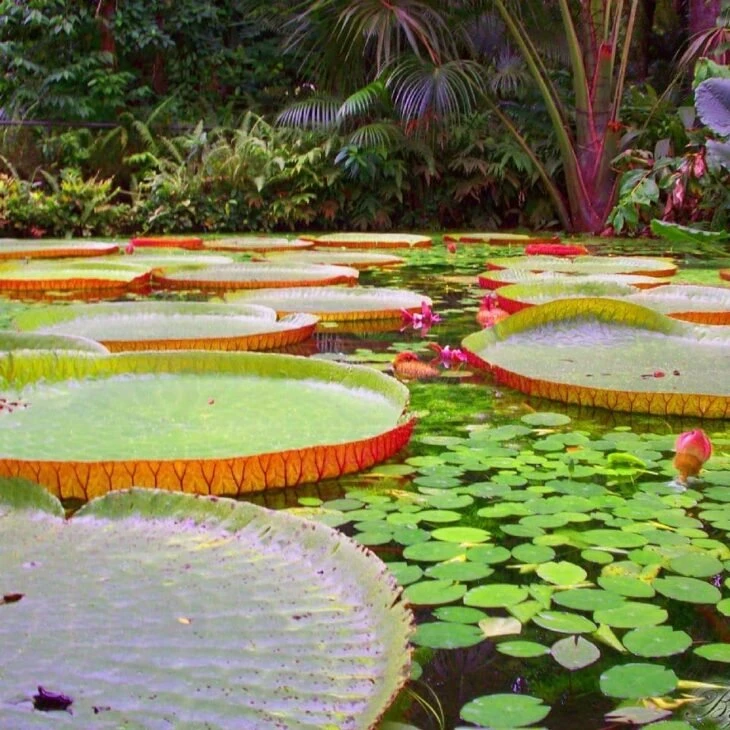
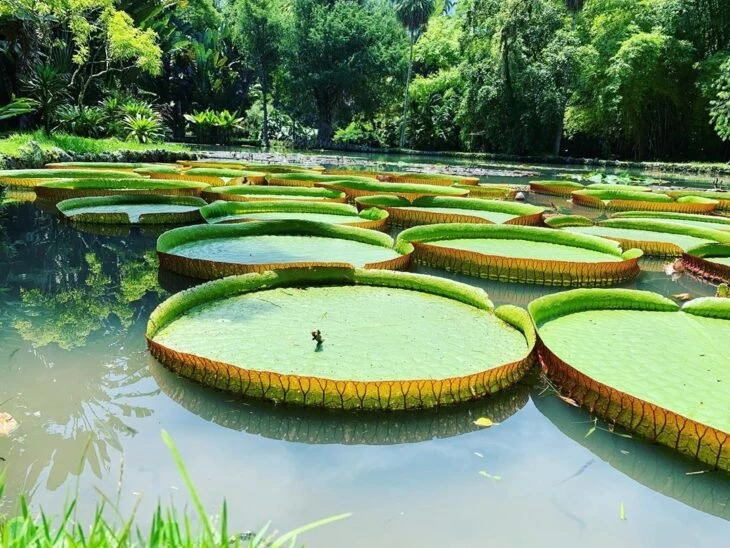
It is also important to remember that the water lily cannot stand low temperatures. For it to develop well, it needs to be in an environment with a minimum temperature of 15°C and the water temperature must be between 28°C and 32°C.
9. white star
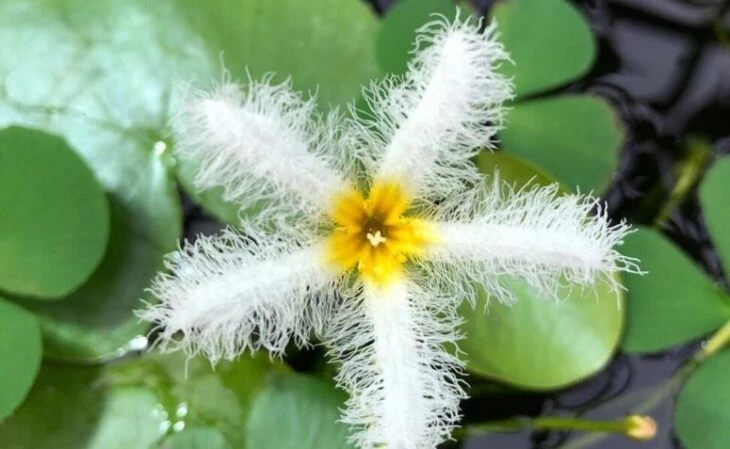
The white star ( Nymphoides indica ) is found in the wild in marshes and ponds. The beautiful flowering plant is native to Asia and Australia. Due to its size, it has to be grown in shallow ponds that have up to 30 centimeters of water column.
See_also: L-shaped kitchen: 70 functional models to incorporate into your project- Key features: The small white flowers of this plant attract attention and give ponds or fountains a more delicate look. They appear in spring and summer. Besides them, the plant is also composed of green, round leaves with a cut in the base that resemble those of the nymphaea.
- Size: The leaves are 10 to 20 centimeters in diameter.
- Sun exposure: However, the plant develops better when it receives more light.
- Watering: is not necessary, but the pH of the water in which the plant is grown needs to be between 6 and 8.
- Soil Type: the soil in the pond should be well fertile and rich in organic matter.
- Fertilization: If there are fish in the pond, fertilizing will be done naturally.
The white star is easy to grow, you just have to be careful with planting and don't forget to bury a part of the rhizome of the plant. Look how lovely it is:
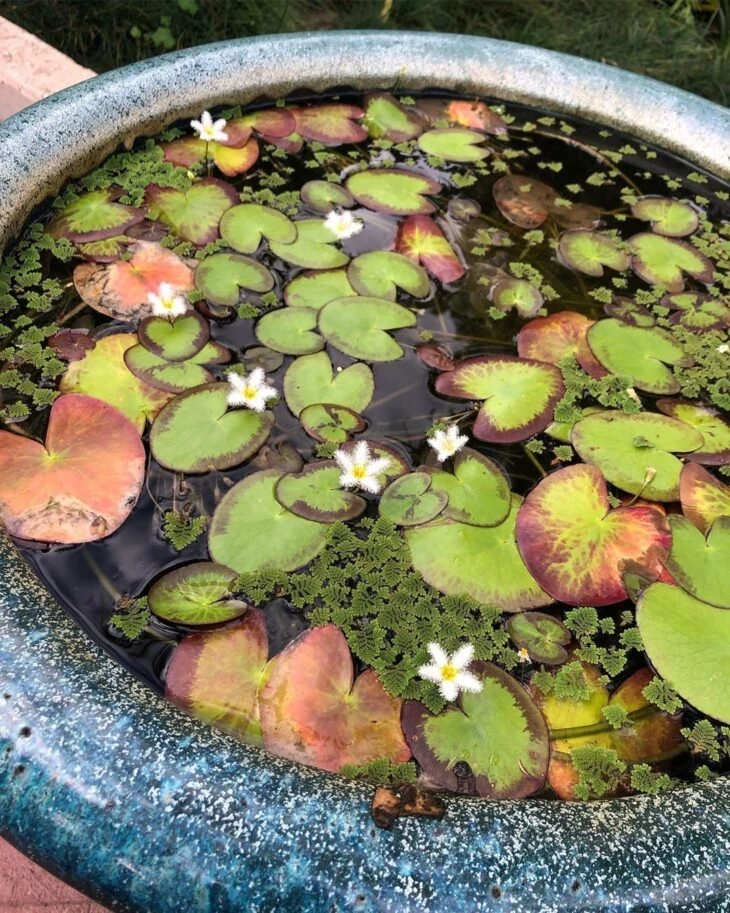
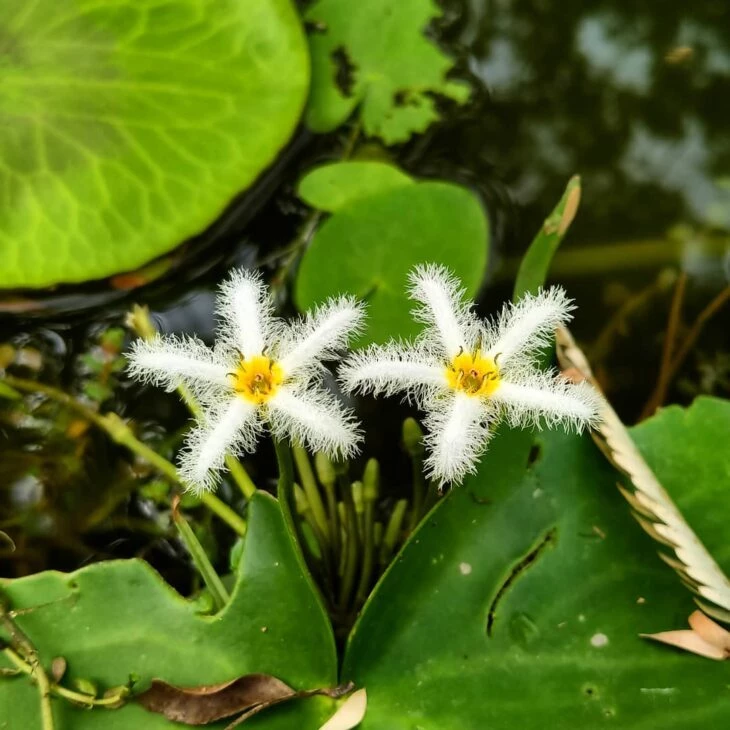

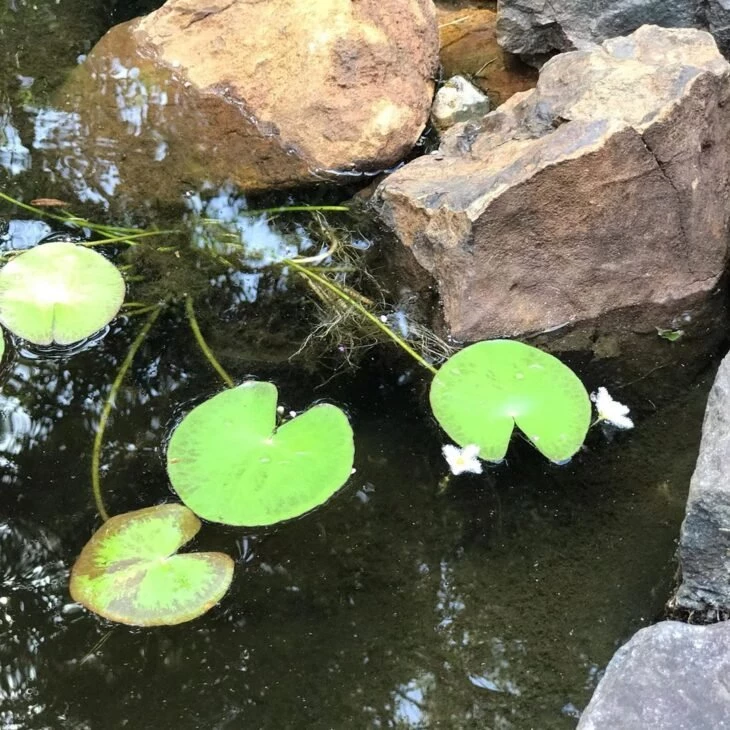
If you have room for a small pond, it is a great option to beautify your home!
10. mosaic plant
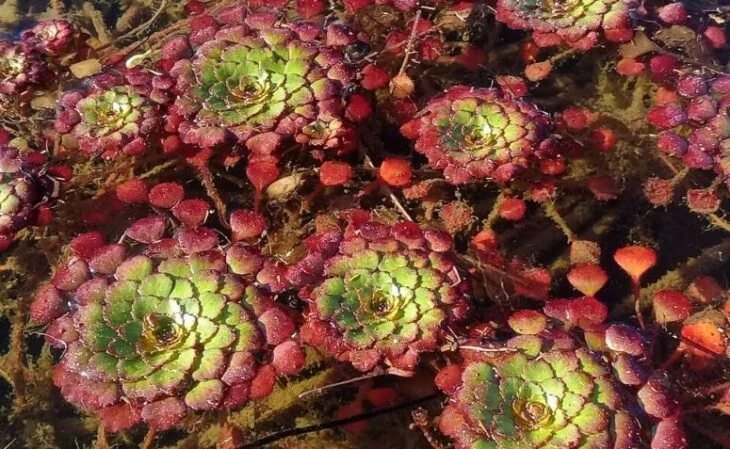
Native to Brazil and Venezuela, the mosaic plant ( Ludwigia sedioides ) is ideal for ponds and lakes, so growing it requires considerable space at home. It is good for landscaping because of the mosaic that its leaves form in the water.
- Key features: Its leaves are small and fit together like a mosaic. They are diamond-shaped and have serrated edges, and the color of each specimen can vary from green to pink. It is curious to observe how during the day the leaves are more distant and during the night they come closer together. In winter, the mosaic plant has yellow flowers.
- Size: 10 to 30 centimeters high.
- Sun exposure: full sun, because it needs at least 12 hours of light per day.
- Watering: is not necessary, but it is fundamental to take care of the water the plant is in. The pH must be between 6 and 7.6 for it to develop well.
- Soil Type: needs to be fertile and rich in organic matter, because the roots of this aquatic plant are fixed in the soil.
- Fertilization: can be done with organic compost, and if there are fish in the environment, fertilization is not necessary.
The beauty of the mosaic plant is enchanting. For it to grow well, it is necessary to bury some of the plant's stem in the substrate, since its roots are fixed. See how beautiful it can be when well cared for:
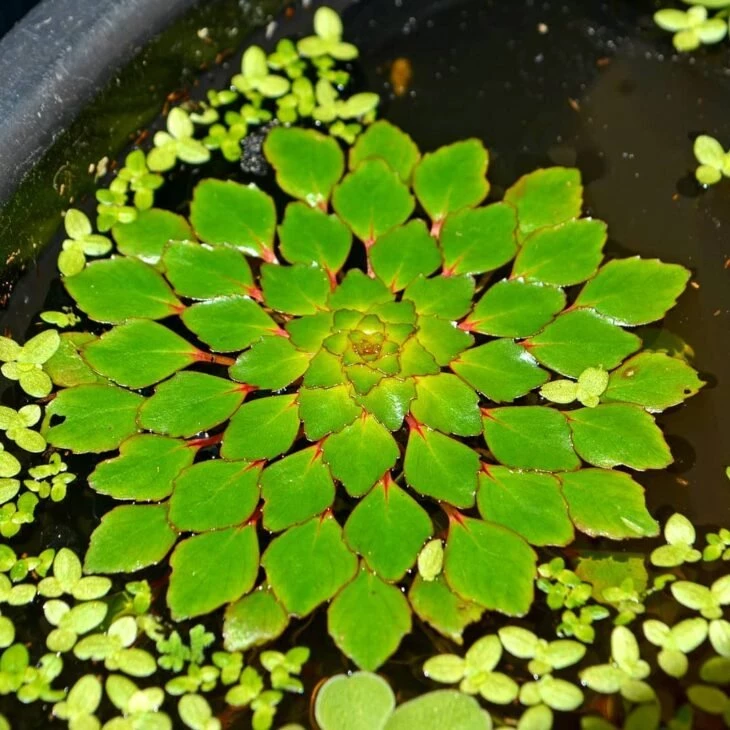
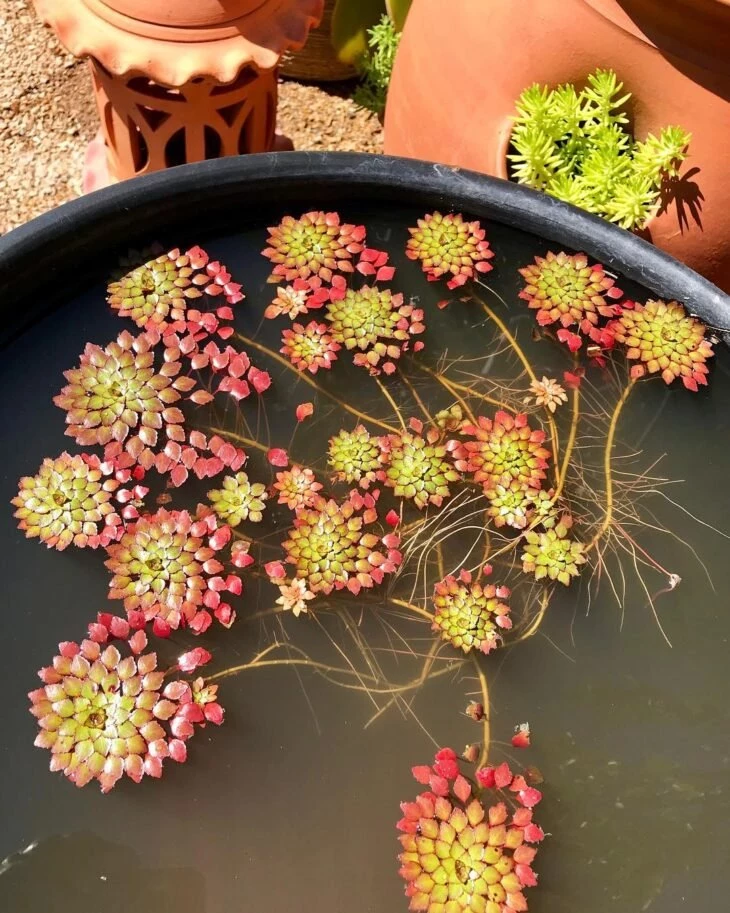
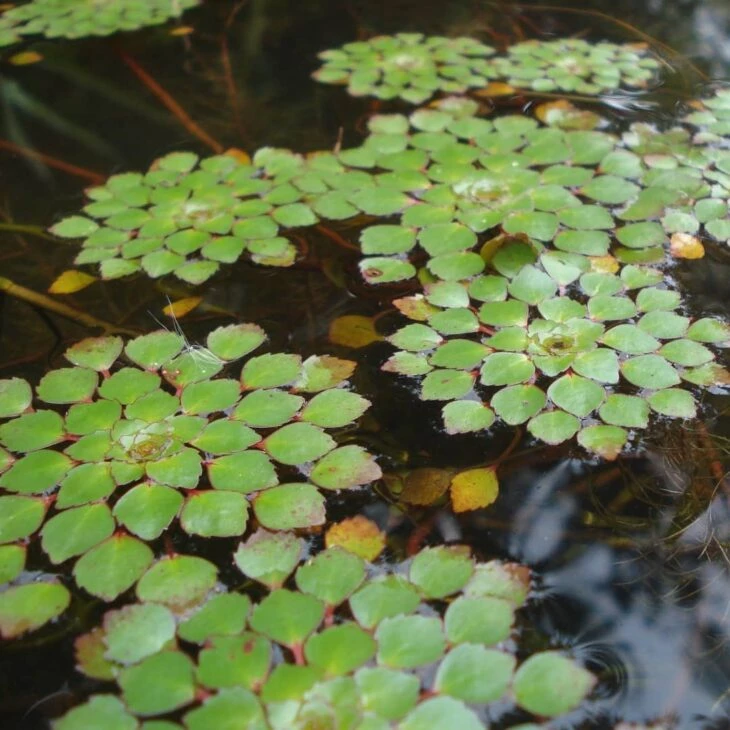

Like other aquatic plants, this one grows fast and can encroach on the space of species grown next to it, so care must be taken that it does not encroach on the space of other species if there are more plants in the pond, fountain or tank.
Aquatic plants for aquarium
Every aquarium needs plants, either to improve the quality of the place, to help feeding the fish or just to beautify the creation. However, it is necessary to be very careful when choosing plants for aquariums. Therefore, here are 5 species that you can grow in your aquarium:
11. duckweed
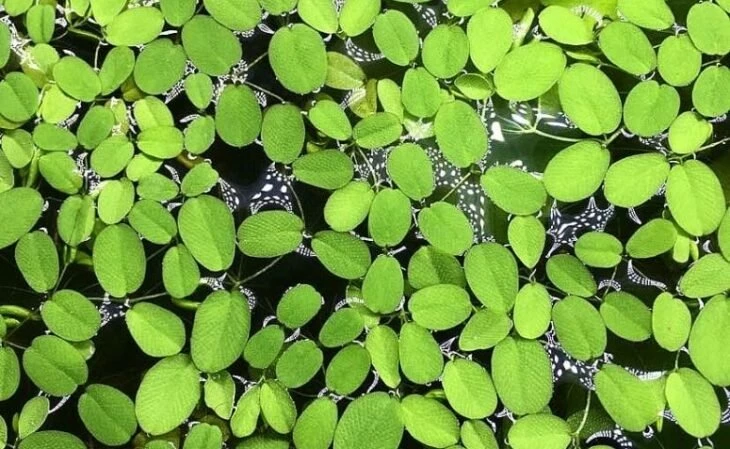
The duckweed ( Lemna minor ) does not draw much attention for its appearance, but it is interesting for aquariums because it can serve as food for certain types of fish. In addition, duckweed helps to de-pollute aquariums and maintain the balance in the habitat, as it consumes waste products such as ammonia.
- Key features: It is a floating plant, so its green leaves stay floating in the aquarium. It is very small, being considered the smallest angiosperm in the world.
- Size: on average 5 millimeters.
- Sun exposure: The light exposure must be high for it to be able to photosynthesize well.
- Watering: is not necessary, because it is a floating plant.
- Soil Type: It also doesn't need substrate, because the roots are buoyant.
- Fertilization: is not necessary, as the plant is indifferent to water quality in aquatic environments.
Although the plant serves as fish food, it has toxic principles that may not be beneficial to all species of fish, so you need to do a lot of research before placing it in your aquarium. See how well it looks in suitable locations:
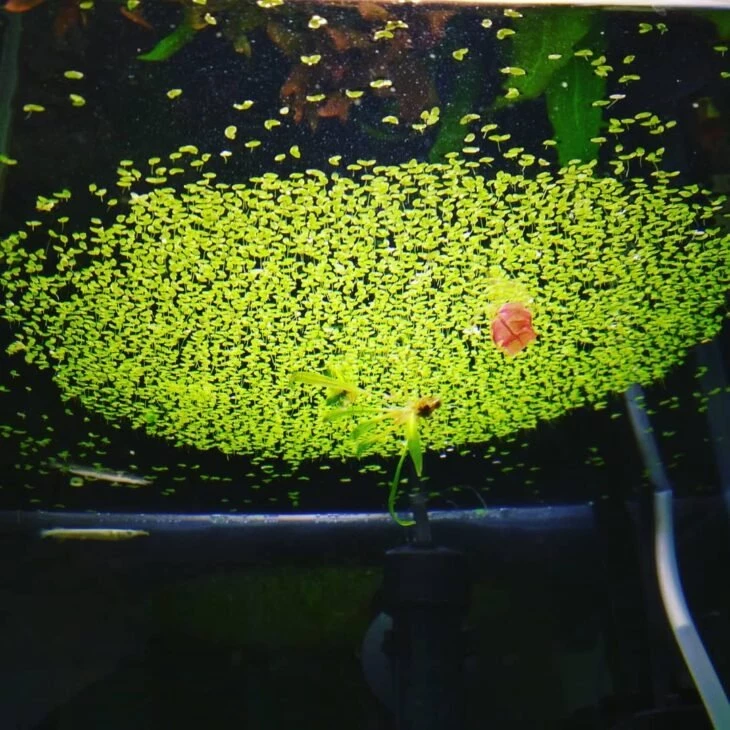


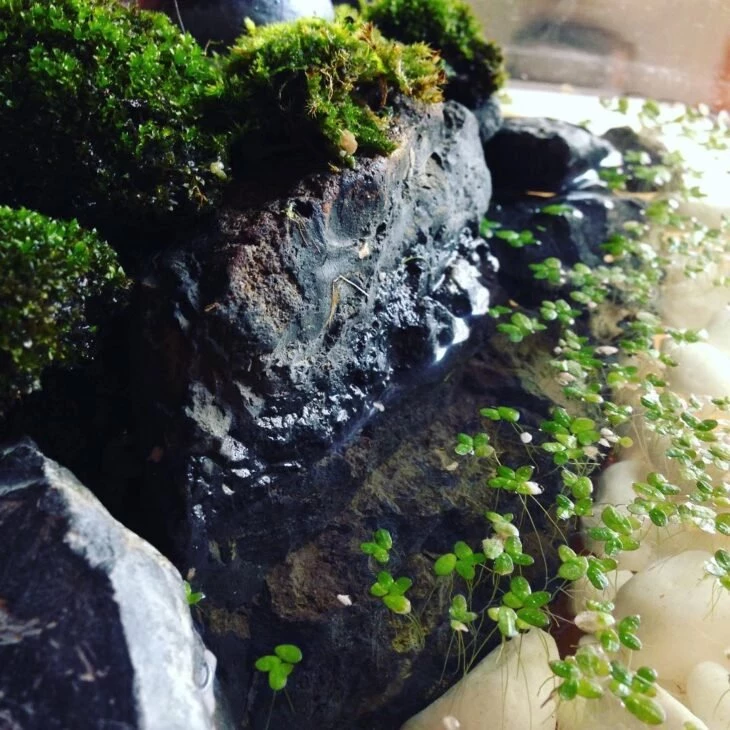
Also, water lentils grow very fast. It is not a problem if there are animals, such as snails and fish, that feed on the plant. However, if there are not, the cultivation must be done carefully so that they do not spread out more than desired in the aquarium.
12. java moss

The java moss ( Taxiphyllum Barbieri ) is native to Asia and, as the name implies, is found especially on the island of Java. Because it is easy to grow, it is widely used in aquariums.
- Key features: It does not have roots, so it absorbs nutrients through its stems and green leaves. It is used to add beauty to the aquarium, serve as a deposit for fish eggs, shelter, and even food for the animals. It can be used as floating or fixed on logs and rocks.
- Size: up to 10 centimeters high.
- Sun exposure: low, but needs a little light to photosynthesize.
- Watering: is not necessary, but the pH of the water must be between 5.5 and 8.0 for the moss to develop properly.
- Soil Type: does not need a substrate, as it can be used as a floating aquatic plant. If you don't want to use it that way, you can also attach it to rocks or logs.
- Fertilization: can be done with liquid fertilizer regularly, but it is not mandatory.
Java moss is often used on rocks and logs to add beauty to the aquarium. To do this, simply place the moss on the chosen spot and secure it with fishing line. After about a month, the line should be removed, as the plant will already be attached. Observe the result in aquariums:


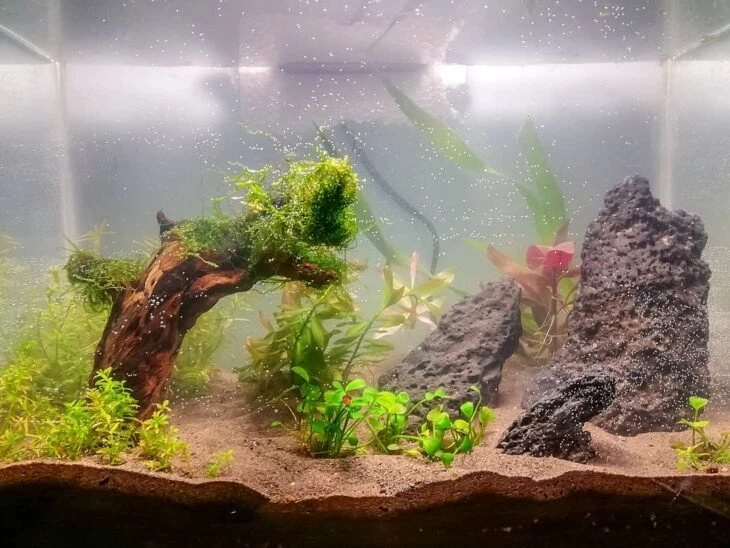
If you choose to have java moss in your aquarium don't forget to prune it when it gets too big. This is the main care for this easy-to-grow aquatic plant!
13. elodea
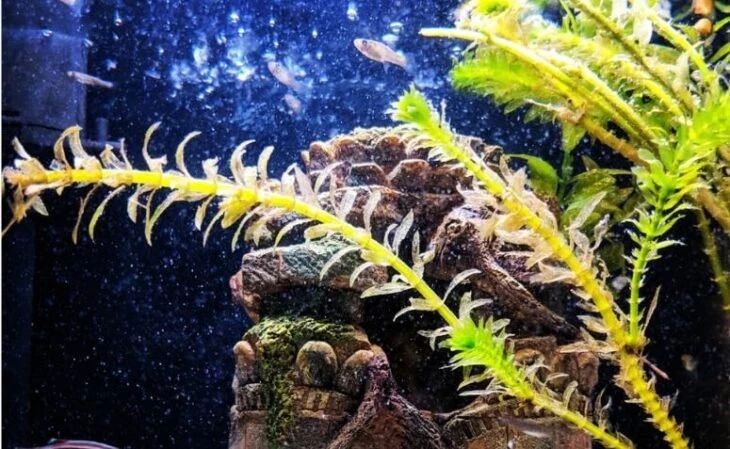
The elode ( Egeria densa ) is ideal for those who are just beginning to take care of an aquarium, as it does not require much care. In addition, it gives life to the aquarium and makes the place more beautiful!
- Key features: The elodea has small green leaves that grow out of its stalks. The plant has fixed roots and grows quickly. It is interesting to grow it in an aquarium, because as it grows quickly, it reduces the appearance of algae and can even serve as food for fish.
- Size: from 0.50 to 1 meter high.
- Sun exposure: needs to be exposed to a lot of light.
- Watering: The aquarium water must have a pH between 5.0 and 9.0.
- Soil Type: It has to be limy, rich in nutrients, and contain limestone.
- Fertilization: Liquid fertilization can be done, but it is not necessary to do it frequently.
As it has fixed roots, the elodea needs to be planted at the bottom of the aquarium. It is best to plant it with some distance from the other seedlings so that it can grow peacefully:
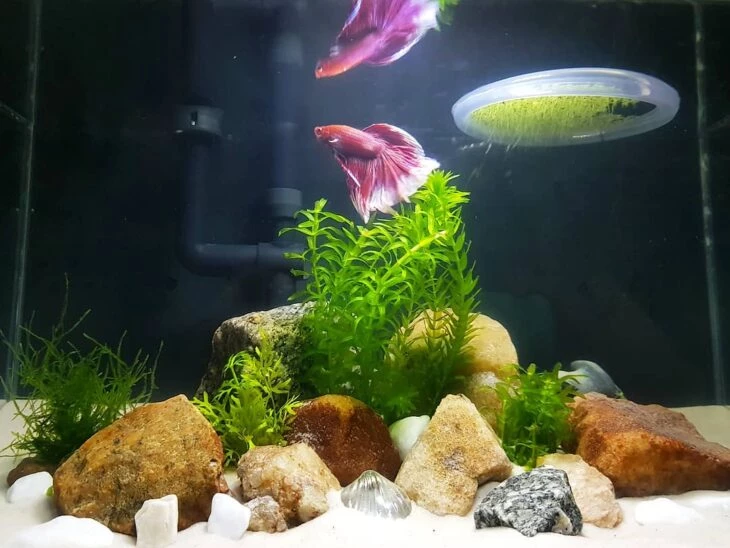
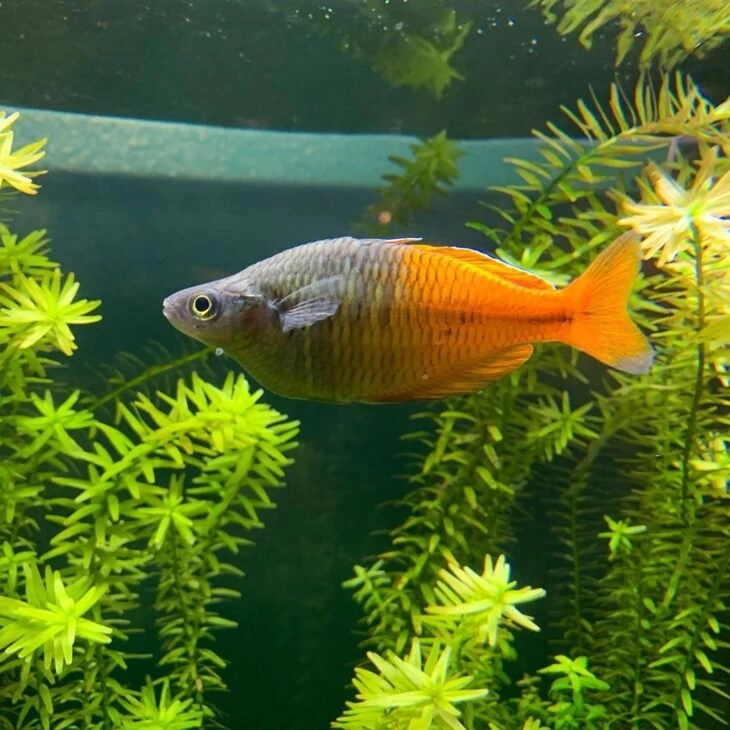

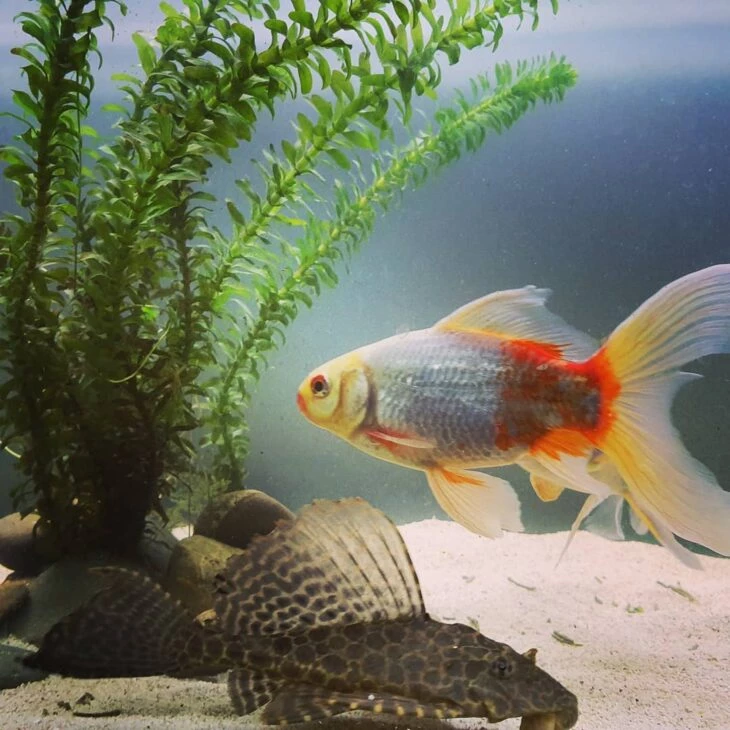
If you are starting your aquarium, how about the elodea? Not only will it prevent algae blooms, it will also make your aquarium more beautiful.
See_also: LED profile revolutionizes interior design with futuristic lighting14. foxtail

Native to South America, Cuba and Florida, the foxtail ( Cabomba furcata ) is a stunning plant. Unlike the elodea, this plant is recommended for those who already have experience with aquariums, because it is a delicate plant to grow.
- Key features: Its red leaves stand out in green aquariums. Cultivation is more delicate, as the plant needs plenty of light and CO2 to grow healthy. Under these conditions, it grows quickly.
- Size: from 30 to 80 centimeters.
- Sun exposure: The light exposure must be high, otherwise the plant may not develop properly and may even die.
- Watering: The aquarium water should have a pH between 6.0 and 7.5.
- Soil Type: must be well fertile, because the roots of the plant are fixed.
- Fertilization: has to be done with liquid fertilizer regularly.
To plant the foxtail, it is necessary to bury a part of its stem in the substrate. Also, to make them look beautiful in the aquarium, it is recommended to plant at least 3 branches in the same place:
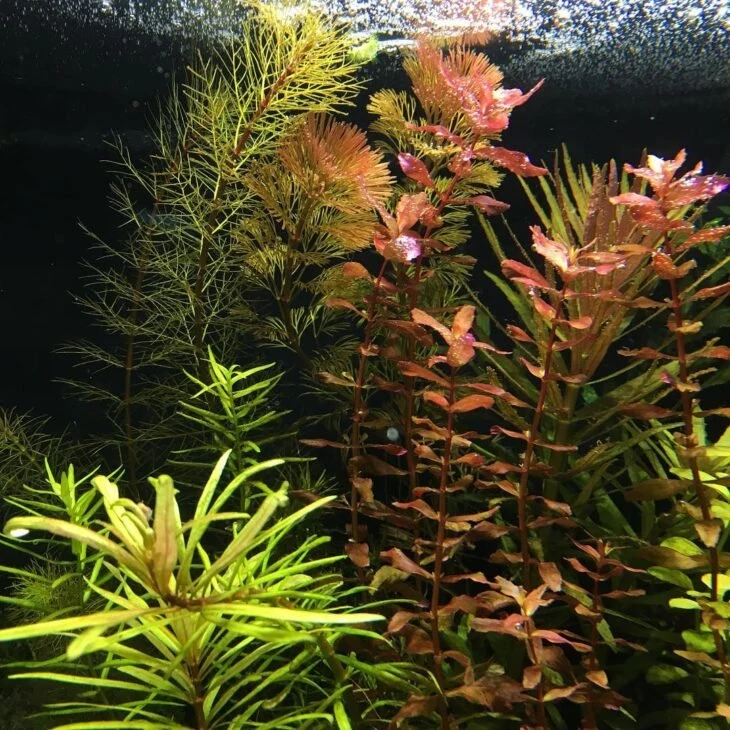


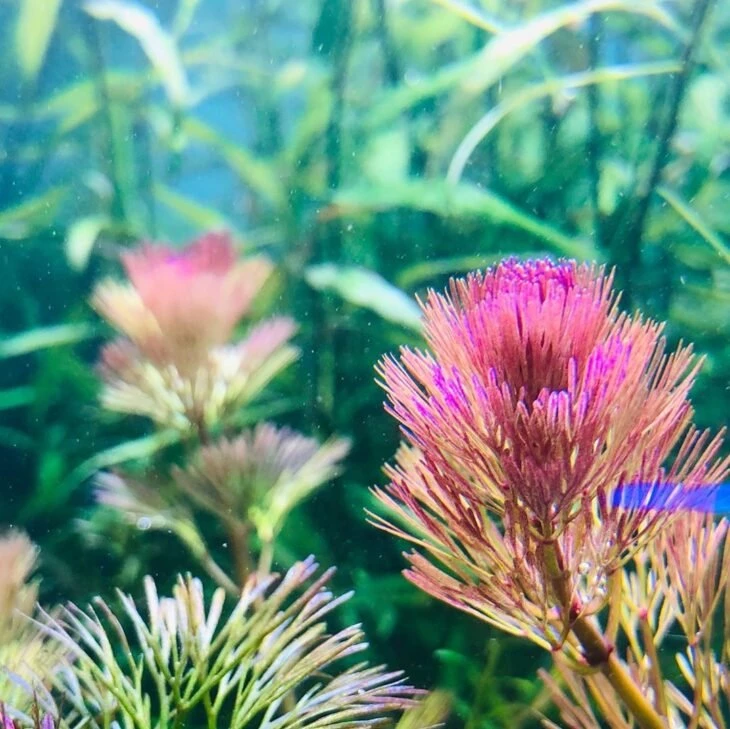
No one can deny that the foxtail stands out among the aquarium greens, can they? If you decide to put it in your aquarium remember that, as it grows fast, you need to prune it from time to time.
15. dwarf Anubia
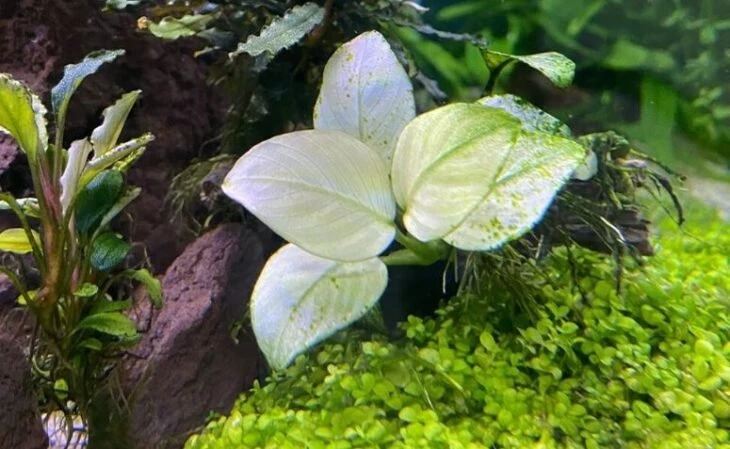
The dwarf anubia ( Anubia barteri var. nana ) is easily found in aquariums. The reasons for it being grown in this type of place are its simple care and its cute appearance that adds to its beauty.
- Key features: Originally from Africa, the plant can be cultivated in the aquarium substrate or on rocks and trunks. Its leaves are very small and add delicacy to the environment. It grows slowly and does not usually serve as food for the animals.
- Size: between 5 and 10 centimeters.
- Sun exposure: the lighting may be dim.
- Watering: The pH of the water can be from 5.5 to 9.0.
- Soil Type: If it is grown in the substrate it is important to remember that the anubia dwarf rhizome cannot be buried in the soil, otherwise it will rot.
- Fertilization: it is recommended to add CO2 to the aquarium, since the plant needs it to grow. However, it is not necessary to add it regularly.
To plant the dwarf anubia on logs and rocks, just use the same trick as for the java moss, that is, attach it to the chosen spot with a weight line. Then, just wait a month for it to attach naturally to the rock or log. Look how cute the plant is in the aquariums:
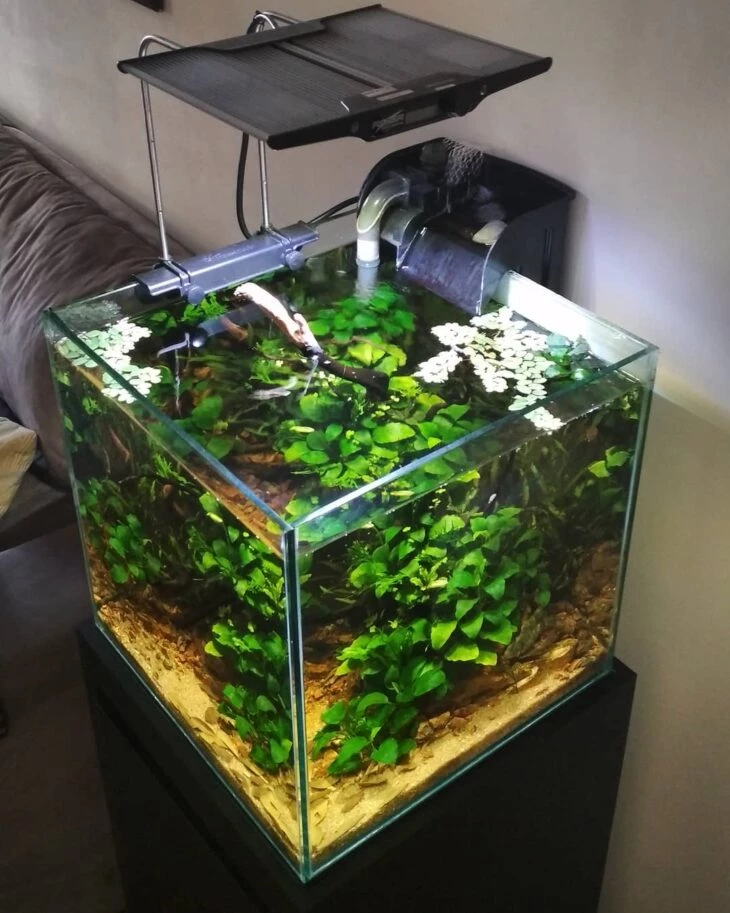


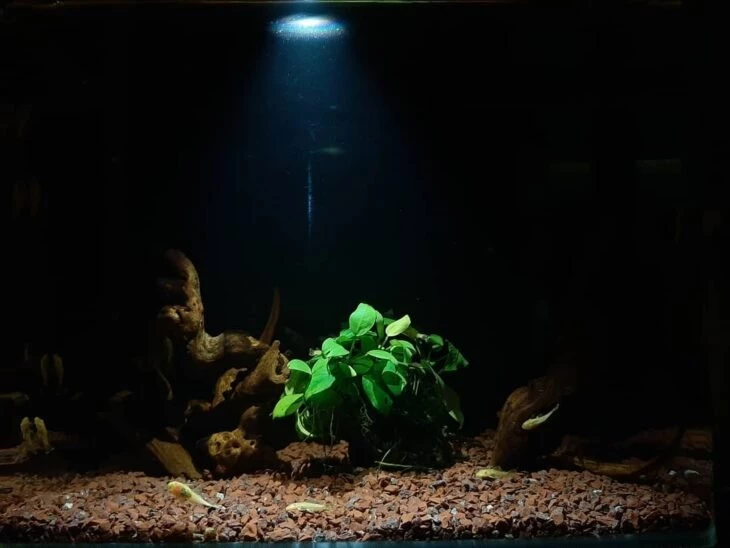
The dwarf anubia is also recommended for beginner aquarists, as it requires only minor care. Regardless of your experience, it is sure to make your aquarium more beautiful and charming.
These 15 species prove it: it is possible to grow water plants at home. Think about the space you have available, the time to grow a plant and the ones you like the most aesthetically. Then, choose your favorite! Now, how about finding out more about garden plants to enhance your decor?


